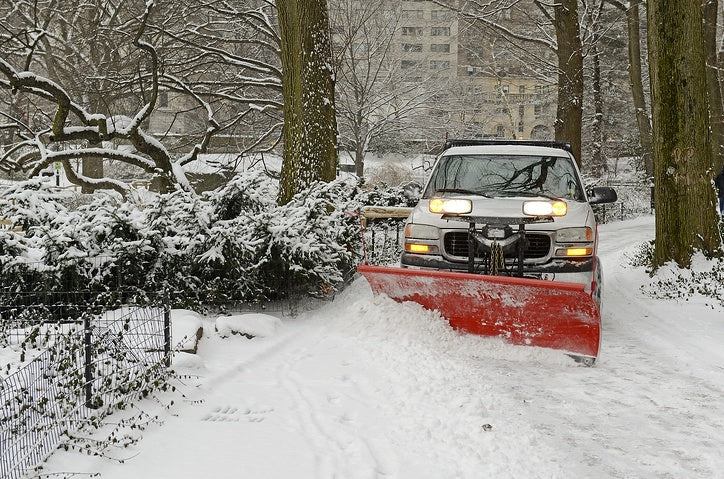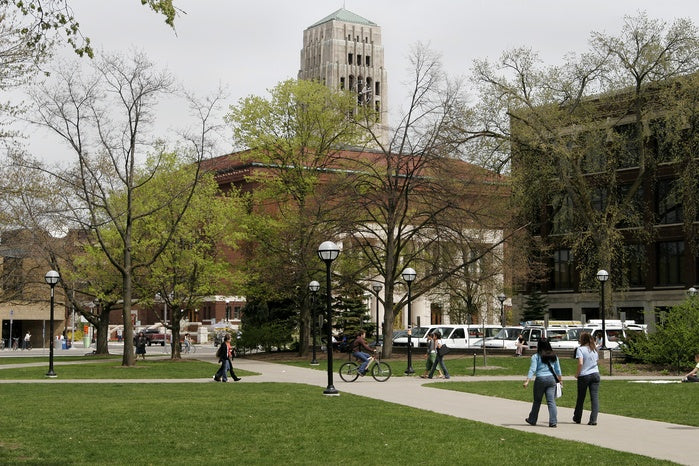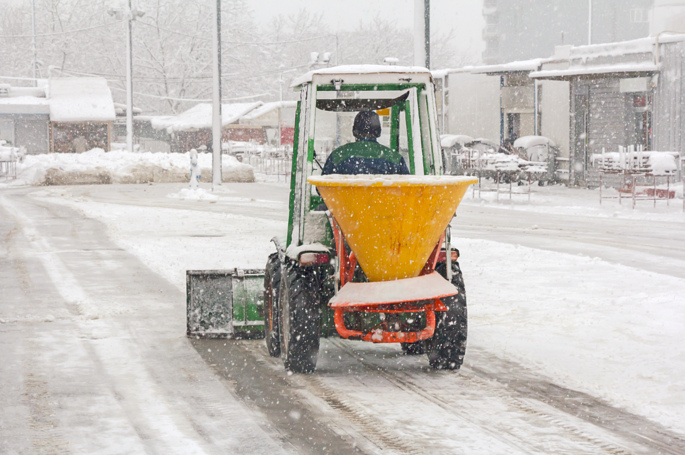
For facilities that operate in Midwest and northern regions, planning a commercial snow removal plan that can cope with the effects of snowfall is an essential part of doing business. Office buildings, hospitals, universities, and other facilities with heavy foot traffic can be hazardous places during inclement weather. Keeping visitors to your organization safe from weather-related mishaps requires careful planning and attention to detail. Here are a few precautions and best practices to follow during the winter season.
Alert Your Visitors to Snowplow Trucks
In a best-case scenario, snowplowing contractors report to your facility at night, remove all snow and ice, and leave the parking areas clear and ready for business the next day. But during periods of heavy snowfall and for facilities that are open 24 hours, it is unavoidable that snowplow trucks will be in use while pedestrians are coming to and from the building.
Drivers scrambling to complete a fixed number of contracts move quickly through each job, making it even more dangerous to those walking from their car to the building. Visitors need to be advised that snowplow trucks are in the vicinity. Consider posting signs around your parking lot advising people walking to be on the alert for these trucks.
Take Steps to Protect Against Hazardous Chemicals
Be aware of the chemicals used by your commercial snow removal contractor, and keep in mind the population of the visitors that come to your facility. Rock salt and other chemicals can be toxic to pets and children who ingest it. Inquire from your contractor as to what chemicals are used and whether they’d be safe for your type of clientele and visitors.
Check the Pavement for Dips
In addition to being dangerous to humans and animals, rock salt and other chemicals are corrosive to your pavement. Over time, this can lead to depressions and holes that are just as hazardous to pedestrians as snow and ice. Make sure any uneven surfaces are repaired before the first snowfall.
Check All Lights and Outlets
Winter hours mean less daylight in the morning and even less at night. Each season, ensure that outer lamps are in working order and perform routine maintenance checks on each lamp regularly. Be sure to also check outdoor electrical outlets to ensure they are clear of snow and ice and that they are in proper working order. Check wires to ensure they are properly insulated.
Be Aware of Dripping Precipitation
When temperatures rise, snow collected inside gutters and other areas around the perimeter of your building will melt and drip down to the pavement below. When the temperature rises again, you now have a patch of ice. It is essential to prevent this type of dangerous pattern that occurs with changing temperatures. The Insurance Institute for Business & Home Safety provides maintenance tips for keeping your roof drainage system in good shape for winter.
Check the Lobby and Interior Walkways
It’s not only the outside areas of your facility that you need to be concerned with. Visitors will track snow from their boots and shoes into the building. This liquid gathers on tiled lobbies and interior walkways, creating an indoor hazard. Ensure that absorbent mats are placed in interior areas to catch liquid before it can be tracked further into the building.
Many of these risks can be reduced and prevented with outdoor heated floor mats used to cover the walkways outside your building. By providing a shield of protection between the icy pavement and your visitors, you help keep the interior areas of your facility dry and safe, prevent dripping roof water from turning into ice, avoid the damage that deicing chemicals can bring, and minimize the need for snow plows. Whether through this solution or the others presented above, do whatever necessary to keep your visitors safe from the dangers of snow and ice removal.


